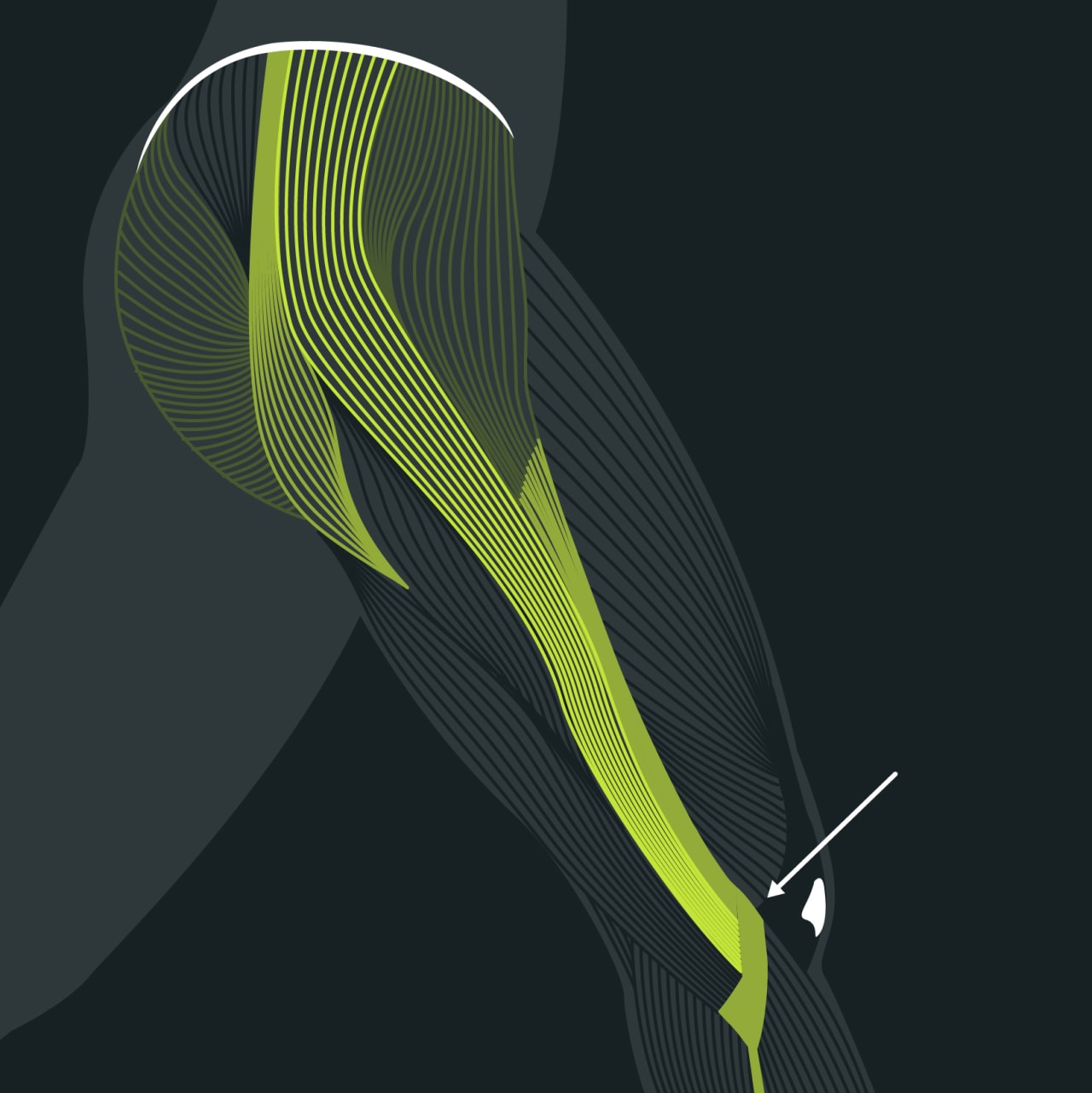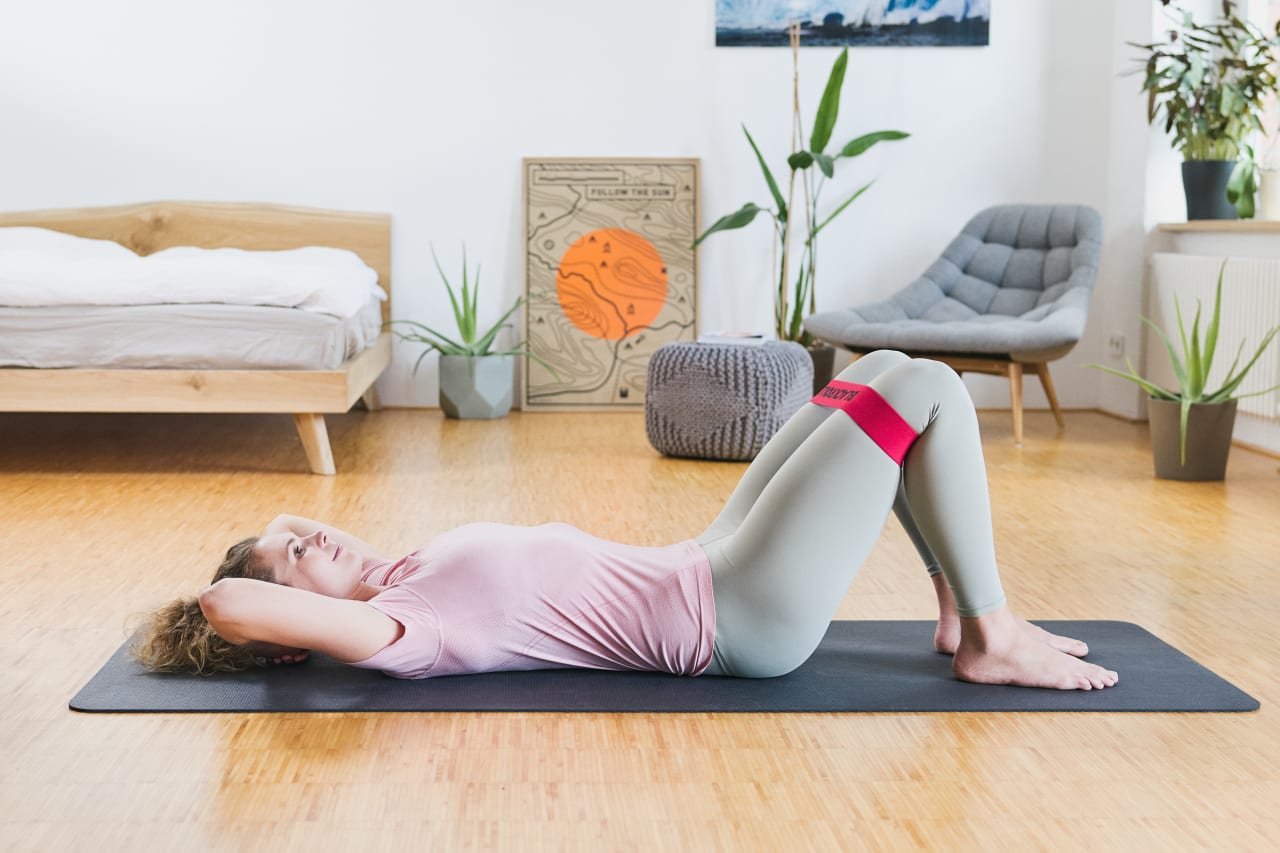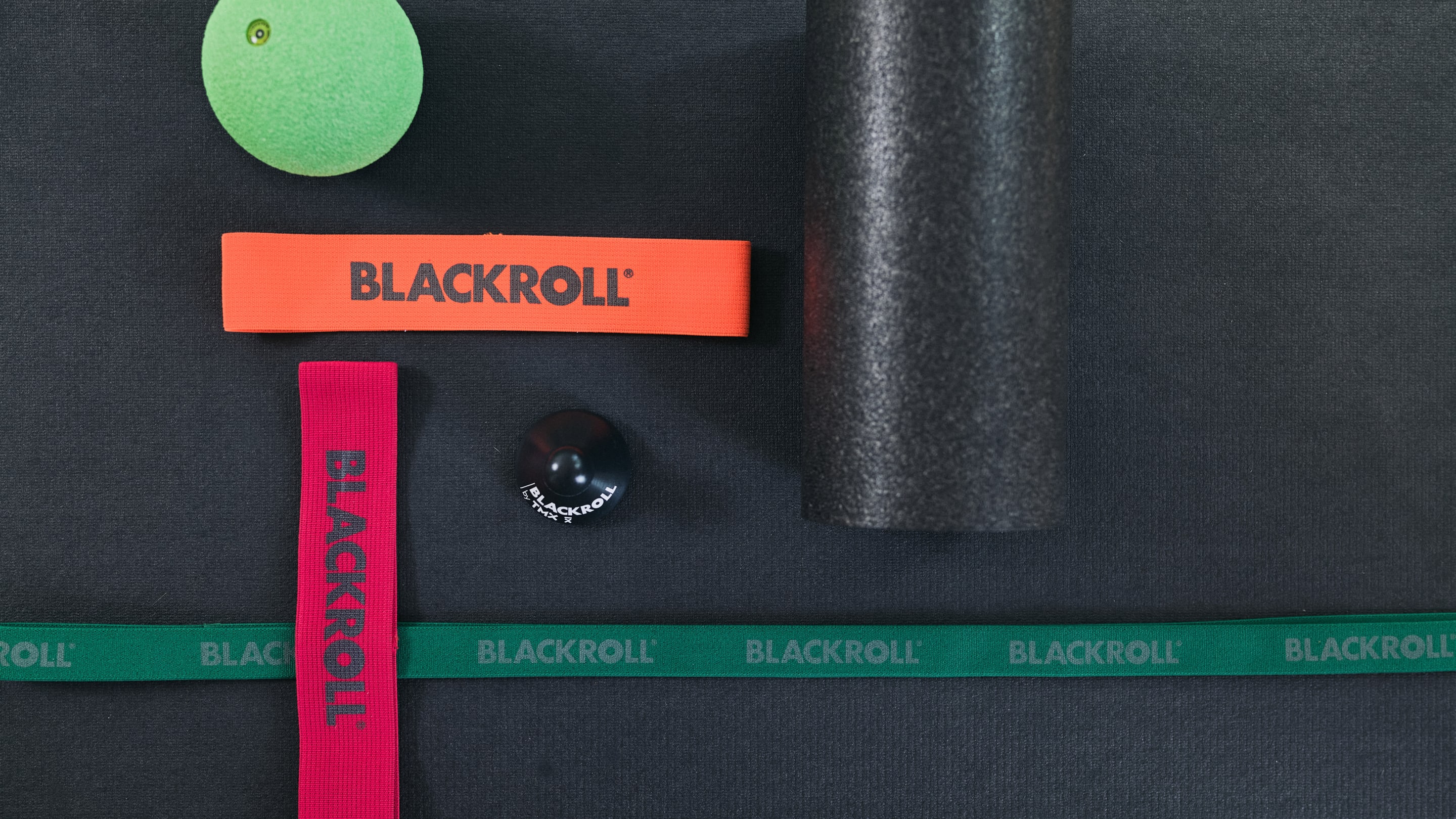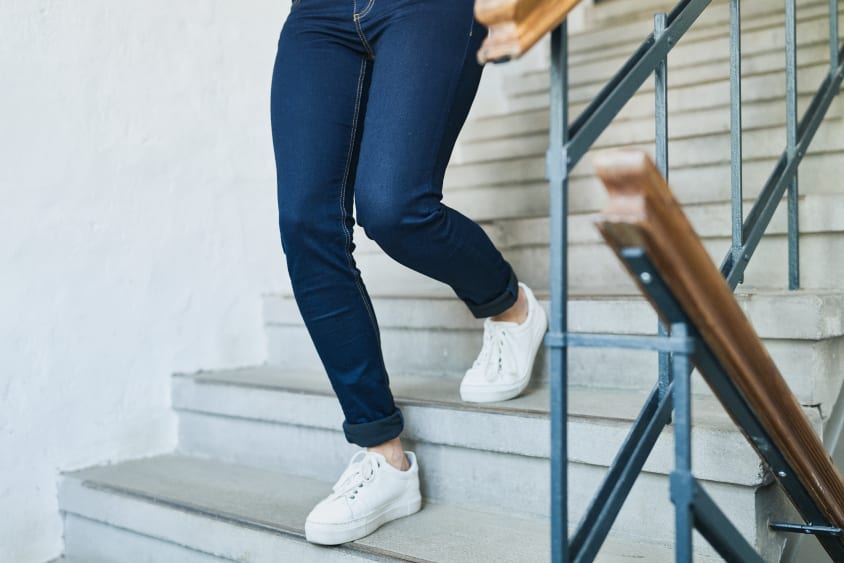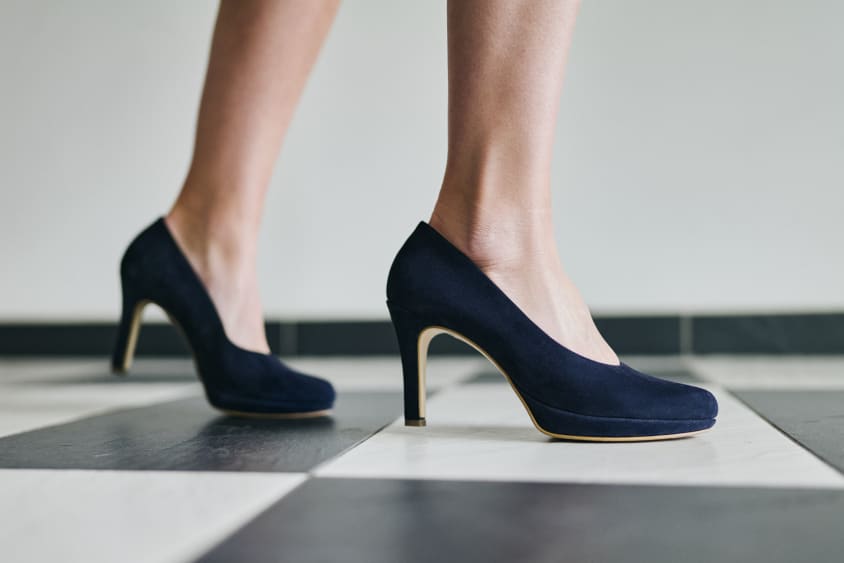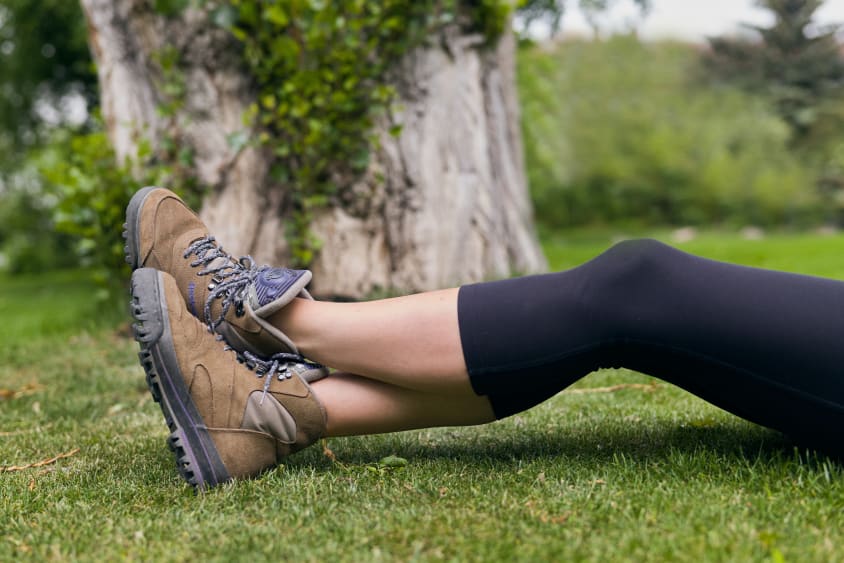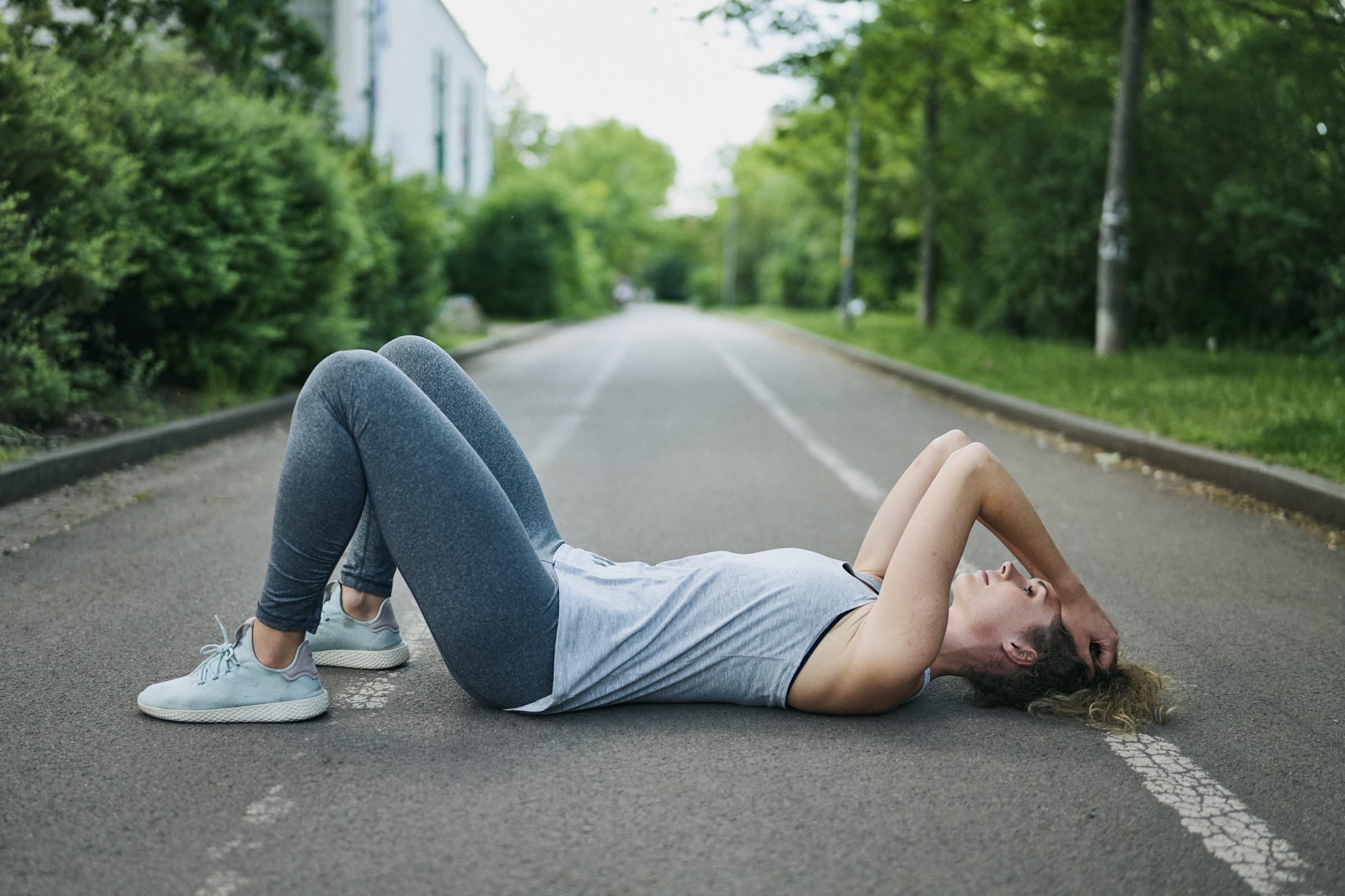
Runner´s knee (ITBS) - the stabbing knee pain.

Are you a runner or soccer player, or do you do another sport that involves a lot of running? If you have sharp knee pain, it’s likely that you have runner’s knee (ITBS).
Sharp pain on the outside of the knee joint is typical of runner’s knee, also known as jumper’s knee, or ITBS. The medical term for runner’s knee is iliotibial band syndrome (ITBS).
With runner’s knee, the pain starts when you’re running, and at later stages it happens when you’re walking, too. Signs of ITBS mostly appear if you increase the intensity of your physical activity, or add to what you’re doing. Here’s the good news: you can really succeed in treating the problem with conventional techniques like muscle and fascia training.
01. What is a runner´s knee?
The wide, tough band of fascia known as the iliotibial band plays an important role when running as it helps stabilize the hips and knees. It goes from the top of the pelvis (iliac crest), down the side of the thigh and across the outside of the knee, all the way to the top outside part of the calf bone (fibula), below the knee. It also connects the gluteal muscles (glutes) with a muscle called the tensor fasciae latae. The reciprocal action of these muscles in turn helps stabilize your leg alignment.
However, if the way these muscles interact gets confused, the forces involved become imbalanced and can cause problems. With runner’s knee, this means there is excessive strain on the thigh bone (femur) where it protrudes outward. This is what causes the unpleasant pain on the outside of the knee associated with runner’s knee.
02. What are the symptoms of runner´s knee (ITBS)?
The symptoms of runner’s knee are distinctive: the sharp pain you feel is always on the outer edge of the knee. The iliotibial band originates, like the glutes, in the iliac crest in the pelvis and runs to the lateral side of the thigh and knee down to the top of your shinbone. This tough fascia structure gets subjected to too much strain, and often the strain is also unbalanced – making the surrounding muscles very sensitive to pressure.
In many cases, the knee pain only starts after you’ve been running for a certain distance. This is a sign that you haven’t fully recovered despite treating the area, and you’ll need to avoid irritating it further. It goes without saying that pain is unpleasant and has negative associations. But when you have excessive strain such as iliotibial band syndrome, pain is a crucial alarm signal that you shouldn’t ignore.
Our advice: start by getting a medical examination to make sure you don’t have any damage to your cartilage and the passive parts of your musculoskeletal system, such as bones and joints. The doctor should check for the following:
- Swelling
- Pain with slight exertion and when at rest
- Redness and heat in the area
- Sharp pain when first starting to move
A professional gait analysis can also be extremely helpful for achieving a healthy running technique in the long term.
03. What causes runner´s knee?
Iliotibial band syndrome is a sign of excessive strain. It’s caused by a combination of myofascial shortening and hardening, restricted mobility and lack of strength, and the imbalances that these result in.
Restricted mobility of the tensor fasciae latae muscle as a cause of ITBS
The tensor fasciae latae and glutes both extend out into the ITB and provide it with the tension it needs to create stability. If the tensor fasciae latae creates too much tension (which can be caused by sitting too much), the thigh rotates inward and the hip bends more. This also increases tension all along the iliotibial band – causing greater friction on the outside of the knee. You could try to imagine it like a piece of string that keeps rubbing against the sharp edge of a stone. Sooner or later, this will cause irritation.
Lack of activity and weakness in the glutes as a cause of ITBS
The main role of the glutes muscles is to stretch the hip. Your body is completely upright and your thighs, pelvis and upper body are all in one straight, upright line. Our glutes suffer from the comfort we take in sitting down all the time. Constant compression severely limits the mobility and neuromuscular activity of these muscles. If the glutes are weak in the first place, they won’t be able to maintain the balance with the tensor fasciae latae properly.
Overpronation of the foot as a cause of ITBS
The way your feet move when you land (pronation) is the foundation for a healthy running style. If your feet tip inward, this causes a chain reaction: your knees and thighs follow this movement, too. The iliotibial band on the outside of your thigh responds by tensing more to help it stabilize the movement and compensate for the tipping movement in your feet.
Poor pelvic stability as a cause of ITBS
It’s common to see many runners with their lower legs strongly tilted inward. A slight tilt is natural and won’t cause problems. Yet if the lower legs are excessively tilted inward, it can indicate that the muscles stabilizing your pelvis are too weak. The muscles can’t do their job of keeping the outer thighs in a stable leg position. This also increases pulling on the outside of the thigh and can lead to runner’s knee (ITBS).
04. How long does runner´s knee last?
With targeted treatment for runner’s knee, you can quickly alleviate the discomfort. Still, it can take up to 12 weeks for tendons, fascia and ligaments to heal fully. What’s especially important when managing exertion: you should only gradually increase your running distances and intensity in the first few weeks, even if the runner’s knee (ITBS) seems to have disappeared and you’re pain-free. Follow our tips on resting and on choosing running shoes, and be consistent with your exercises for self-treating runner’s knee.
05. How long should I rest/take a break?
This is a call to all ambitious runners and athletes: it’s crucial that you rest throughout the time when you’re doing corrective exercises. If you keep irritating the area again, it will unnecessarily delay your long-term healing and can undo any work you’ve done. Bear in mind that it was uneven weight distribution while running that gave you ITBS in the first place. If you go back to running too soon and undo the work from your corrective exercises, you won’t make progress. Give your body time to regain the right balance so that runner’s knee and pain don’t become a chronic problem.
06. What kind of running shoes/ knee bandage I use for runner´s knee (ITBS)?
Is a knee bandage a good idea? A bandage can support the knee and help with stability, which can bring some relief. In some cases – depending on both the person and on the bandage used – the additional pressure can actually increase pain. You should try and see for yourself whether a knee bandage is right for you. Important to know: a bandage can only provide support; it can’t get rid of the causes of runner’s knee that we’ve described above.
What kind of running shoes should you wear? It’s difficult to give a general answer to this question. Your choice of shoe depends on many factors, such as your body’s biomechanics, tension balances, running technique, and the amount of time spent running. Sometimes, the right insole support can help with overpronation of the foot as described above. In general, however, we recommend doing the following exercises and adapting your running technique so that you actively use the foot arches and the rising muscles and fascia as cushioning structures, instead of the bones and joints. This imitates a healthy barefoot running technique and essentially means using barefoot running shoes. Be careful: it takes time to adapt.
“Runner’s knee is one of the most common diagnoses for knee pain, especially in young and active people. Tissue changes such as shortened muscles and fascial adhesions often lead to misaligned joints owing to opposing rotations between the thigh and lower leg, in addition to unnatural pushing and pulling on the outer knee joint. A good runner’s knee treatment involves adjusting activity and learning techniques to regulate imbalances." Dr. Torsten Pfitzer, holistic pain therapist and health coach
07. How can I treat runner´s knee?
- At the midway point of your ITBS treatment, you’ll be doing fascia training with targeted strength exercises for the muscles that stabilize your pelvis and hips. Important to know: you should relax the tensor fasciae latae muscle, which is often overly tense, and the hip flexors to help you get your hips back into their correct, natural position. The BLACKROLL® products can serve you well here.
- Your ability to control the stabilizing muscles in your buttocks and core are important for running healthily in the long term. As we’ve mentioned, the foundation for keeping your knee and leg position stable is healthy foot pronation where the foot doesn’t tip inward too much. The simplest kind of exercise for the muscles that stabilize your foot is barefoot running, along with training the muscle in the big toe that lets it spread outward and draw inward (the abductor hallucis).
- Good to know: based on what we understand so far, the iliotibial band itself doesn’t become inflamed. That means anti-inflammatory medicines and painkillers won’t work.
08. Here´s how you can prevent runner´s knee (ITBS):
Of course, the best thing to do is to prevent runner’s knee (ITBS) in the first place. You can do this if you optimize your running style and incorporate more three-dimensional movements into your exercise, such as side steps, cross-steps, running backward and running on different surfaces. You should also make sure you have the right shoes and enough recovery time. By doing the right exercises using BLACKROLL® products, you can prevent myofascial imbalances in good time.
incl. online training
